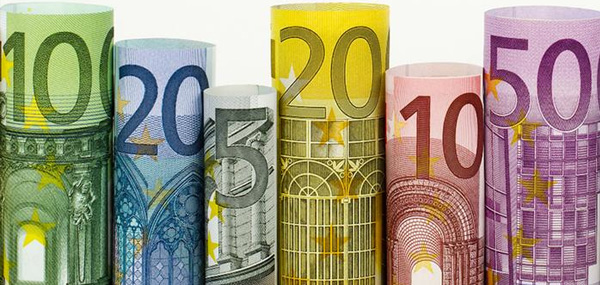Currency in Venice

Everything you need to know about currency in Venice and related services, including banks and currency exchange offices.
The official currency in Italy is the Euro (€) (the same as most of Western Europe).
The Euro is divided into 100 cents, with two decimals after the comma, so in Venice, as in the rest of Italy, you will see the prices shown in this way:
- €10.00 (ten euros); or €3.14 (three euros and 14 cents), etc.
Where and how to exchange currency in Venice
Once you get to Venice you'll need Italian money. For a visitor, it is very important to make a correct currency exchange.
But the currency always changes, for example the exchange rate from Euro to GBP (British Pound) is now (October, 2019) 1 to 0.89, so if you pay 10 € for a pizza you spent about 9 pounds, but several months ago the rate was 1 to 0.86, so, 8 months ago, the same pizza of 10 € cost about 8 and a half pounds rather than 9.
For any kind of conversion (Euro to dollar, Euro to Indian rupee, Euro to Japanese yen etc.) you can use this currency converter online.
If you are wondering where and how to get the Italian currency, you can do it at one of the city's currency exchange offices, which will exchange your money for a small commission. You can also find currency exchange offices at the airport or train stations, but those usually take a higher commission.
If you don't like to go around carrying too much money with you you you can also use a credit or debit card, but, depending on your bank, you could pay the exchange rate for every payment you make, so we recommend you take a prepaid travel card.
However, we advise you to always have money with you when you travel around Venice, because sometimes you will not be able to pay with the card, especially for small amounts of money.
Euro banknotes: colours and values of the Italian currency

Euro banknotes are of different sizes and colour depending on their value. If you visit Venice, you must learn to quickly recognize the value of the banknotes by color to be sure of how much you are spending.
Here is a list of the colours and their respective values:
Purple: 500 euro banknote (the highest value Euro banknote); Yellow: 200 euro banknote; Green: 100 euro banknote; Orange: 50 euro banknote; Blue: 20 euro banknote; Red: 10 euro banknote; Grey: 5 euro banknote;
Euro in coins

There are also coins: the 2 euro coin and the 1 euro coin are made of two different metals, 50, 20 and 10 euro cents coins are made of gold metal, and the 5, 2 and 1 euro cents coins are made of copper.










Lascia un commento